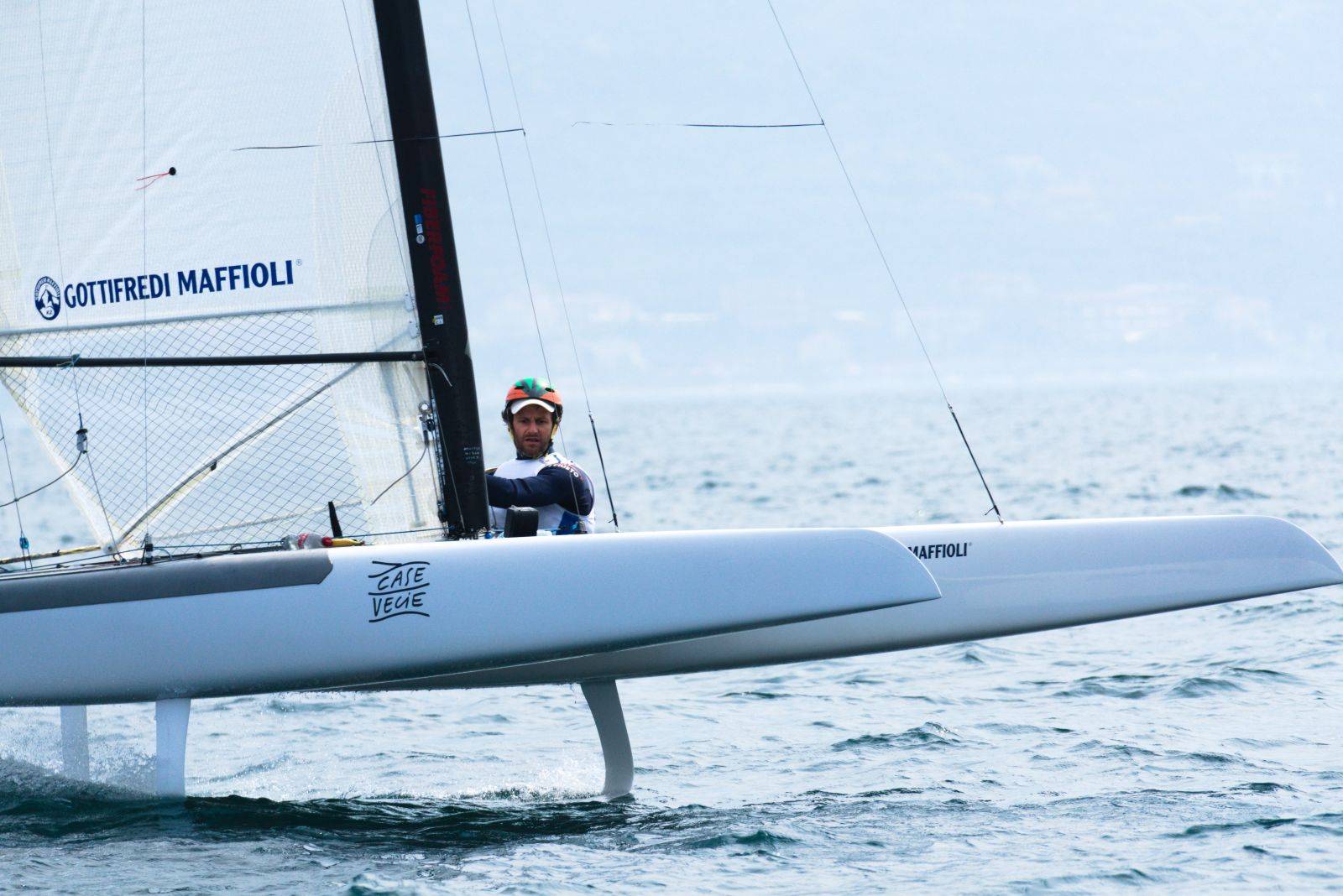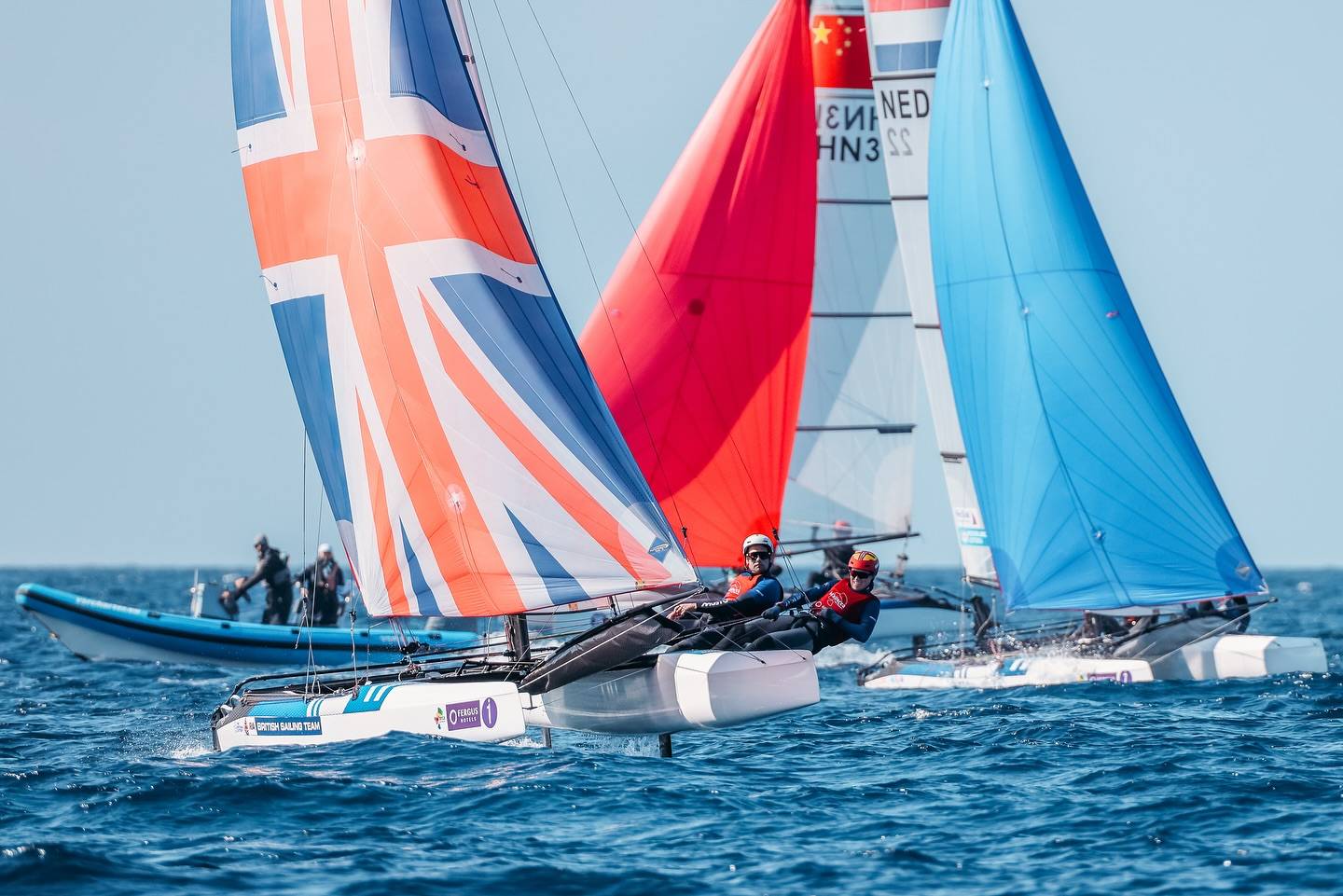H16 , F18 to Nacra F20FCS: Blair Toland’s First F20 flight
Below Blair reports on his experience of sailing the F20 beast, he as is big guy so I was interested to know how felt onboard the huge F20 platform. As the 20 is indicated indeed, as reported many times, for heavy weight or big sailors. Video above edited by Dalton Tebo.
Once unloaded, we spent a few hours in the morning one sunny August Wednesday finalizing the rigging, getting all the go-fast bits in the right places, we hoped. Going from a Hobie 16 to an F-18 to an F-20FCS, it seems as though each successive boat’s rigging expands exponentially. The L foils are the heart of this foiler, and rake, both fore and aft, plus ride height are critical controls, with lots of lines.
Going from an Infusion to the FCS takes a bit of brain processing, as its all the same, for the most part, but there’s just SO much more of it. It even takes longer just to walk around her, relative to an F-18. Needless to say, as a larger (6’9″ and 220lb) F-18 skipper, I felt comfortable almost instantly on the 10′ beams and lengthy hulls. I was pumped to get out and rip.
The breeze was steady, maybe 10-12 knots out of the southwest, a killer Newport afternoon. We set
off north of the bridge downwind, in search of a good stretch of bay to open the beast up. Time to sheet in, rake the massive carbon L foils back and hop on the wire, as its time to fly. I thought back to 2006 on my first boat, an old Hobie 16, and the sensation of trapping out and flying a hull for the first time. The sensation of single hull and rudder slicing cleanly through the water as your speed builds. It’s a rush all cat sailors get, and I got the same chills this day as well.
After consulting factory setting stickers on the tall carbon L foils, we fussed around with the rake a bit, dropped the boards, popped the big polyester kite and hopped on the wire. Todd heads her up into the breeze and she rockets forward, not unlike a powered up F-18…for moment. The leeward hull starts to rise high out of the water, the speed increases exponentially, and you realize this is no F-18. We both have shit-eating grins and are probably giggling like kids as we adjust to the speed, sound and sensation of hauling serious ass, four feet off the water. It took a little while to get the feel for popping her up onto a steady foil and we got tea bagged and washed off the back a few times, but it got easier as we kept at it.
Flying the kite and foiling didn’t seem so hard, so we thought lets douse and go upwind, how hard could it be? Its seems like that’s a bit trickier, as the groove between hulls down, hull popping, double trapping and getting block to block on the main takes a bit more coordination. We did get some nice reaching foils in, clocking in at 27 knots peak on a GPS while double trapped. The speed is just wild. The slightest tiller move can make the hull drop out from under your feet before you know it, so a steady hand seems to be a good skill to have skippering this thing.
Toward the end of the sail, the Wednesday night Shields fleet was cruising out into the bay. We buzzed through them with the big carbon girl a bit, just for shits and giggles. What good are fast and fancy toys if you can’t invoke at least a little jealousy, right? I’m damn sure I heard at least a few “What the hell!!”s and other jaw dropping noises and we rocketed past their old school, five knot parade. It was quite the feeling and quite a ride.” —-




























I just heard that my great sailing friend and former CEO of Hobiecat Europe has passed. May The endless oceans…
...Report was sent by an F18 Sailor, if you want Hobies reported send your own, we'll publish as usual. Cheers.
Looks like in your report the Hobies are not really present. Suggest to rewrite the article.
Thanks for the great report Wik. Great battle.
If I correctly read the results the overall winner this year is a Hobie16